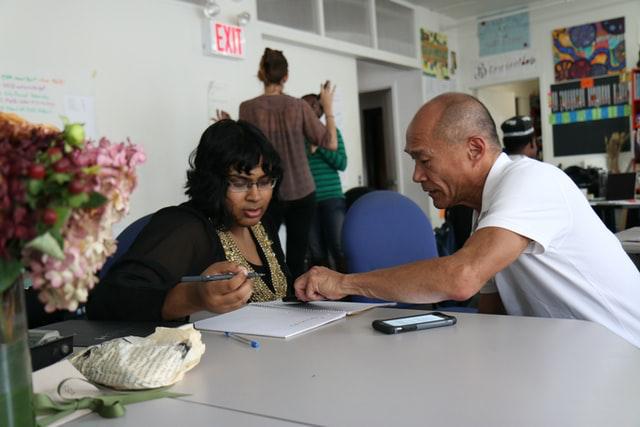We’ve all heard that diversity is a good thing. It’s not just a nice thought, though. In cities, countries, teams, and organizations, diversity boosts creativity, innovation, and growth.
- In cities and societies, the blending of cultures creates new cultural expressions, including new foods and musical genres. Jazz, hip hop, and rock ‘n roll are the direct result of cultural amalgamation.
- The most prosperous and disruptive cities in the world—New York, Singapore, Dubai, London—are so because of their diversity. High-skilled immigration leads to innovation.
- A diverse group of people is smarter than the smartest person in it because each individual possesses unique information and a different perspective.
What we talk about when we talk about diversity
When we talk about diversity, we’re not just talking about race, gender, and ethnicity. We’re also talking about religious and political beliefs, educational and socioeconomic backgrounds, sexual orientation, culture, disabilities, and experiences.
A study published in the Harvard Business Review suggests that in addition to inherent diversity—traits you are born with, such as gender, ethnicity, and sexual orientation—there is also acquired diversity, which are unique traits you gain from experience.
“Working in another country can help you appreciate cultural differences (…) while selling to female consumers can give you gender smarts,” the authors explained.
Companies whose employees possess a mix of inherent and acquired diversity—which the researchers call “2-dimensional diversity”—out-innovate and outperform others.
The lesson of diversity is a simple one, a compelling one, one that’s been demonstrated over and over again. Diverse populations solve problems better and faster than homogenous ones.
Seth Godin
The case for workplace diversity
Multiple studies show that companies are more effective, successful, and profitable when they are diverse. Diverse teams are not only more capable of finding innovative solutions to problems, but they’re also better at empathizing with diverse audiences. Here’s a list of findings from select studies:

- Female representation in top management leads to an increase of $42 million in firm value.
- When companies employ gender diverse leaders, they are 21% more likely to outperform others.
- When they employ ethnically diverse leaders, that likelihood increases by 12%.
- Teams with a 50:50 gender diversity ratio outperform others in quality of work.
- Racially diverse groups outperform others in problem-solving.
Practices for inclusive recruitment
Talking about the importance of increasing workplace diversity, however, isn’t the same as taking action. Here’s a list of suggestions for finding and attracting diverse talent.
1. Set workplace diversity goals
Ensure the top of your funnel is as diverse as it can be by setting an ambitious, yet attainable goal. You can aim to direct 50% of your outreach to women or identify 25 candidates without university degrees. LinkedIn Insights can help you set a reasonable goal. For example, if you pull a report on your target talent pool and find that 30% is female, you can aim to have a pipeline that reflects that gender ratio.

2. Use custom search filters and Boolean search strings
Take advantage of advanced search filters, Boolean search strings, and operators to identify qualified candidates of a specific gender, race, or sexual orientation.
For example, you can use LinkedIn Recruiter to search for accounts linked to historically black colleges and universities; to Asian-American fraternities and sororities; to identity groups such as Women in Technology; the Black Professionals Network; and Queer, Non-Binary, and Transgender Engineers.
Creating custom search filters and Boolean search strings takes initial time and effort, but once you do the work, you can save it and apply it to all your future searches.
3. Understand the needs of your target audience
Stack Overflow’s 2019 survey showed that male and female developers value different things when considering job opportunities. What matters most to male candidates are the languages, frameworks, and technologies they’ll be working with.
On the other hand, women are more concerned about the office environment, the company culture, and flexibility. When reaching out to prospective candidates, make sure you understand what’s important to them so you can better pitch your company and open positions.
4. Go where underrepresented candidates are
Learn about local and national events for underrepresented professionals by searching websites such as Eventbrite or Meetup.com. Attend these events to educate yourself about the experience of specific groups. See if your company can provide office space for small regular meetups or sponsor a larger event.
5. Partner with organizations committed to empowering minorities
Teaming up with nonprofits and community organizations is a great way to tap into the diverse talent pool. There are organizations representing women; minority populations; black, Hispanic, Asian-American, Native American, and LGBTQ people, people with disabilities; veterans; and more. Here’s a list of US organizations committed to empowering minorities and underrepresented professionals.
6. Get curious about candidates with unconventional career paths
When you search for candidates based on their skills, you open the hiring process to a variety of backgrounds, cultures, and experiences. Consider non-traditional paths to the position you are hiring for: If you’re recruiting for a tech role, reach out to candidates who have graduated from coding bootcamps in addition to those with university degrees.
7. Ensure job descriptions are inclusive
To ensure women and underrepresented individuals apply to the jobs you’re offering, eliminate gender-themed words from your job descriptions.
The verbs challenge and dominate, and the adjectives decisive, confident, and determined are examples of masculine-themed words that are proven to put women off from applying.
To create more inclusive job descriptions, considering using tools such as Textio Hire.
You might also want to reduce your list of requirements or encourage job seekers to apply even if they don’t meet all of them. This is important because women tend not to apply for jobs unless they’re 100% qualified. Also, restrictive requirements tend to exclude minorities who haven’t had the same opportunities as individuals with more traditional backgrounds.
8. Make your commitment to D&I clear in your employer brand
If your company values workplace diversity and inclusion, it’s important to share it on career pages, the company blog, and social media.
Your careers page should include photos and testimonials of diverse employees. Your list of benefits and perks should reflect the needs of diverse candidates.
Your blog and social media should show what the company is doing to increase diversity and highlight those people with different backgrounds who contribute to the company’s mission and vision.
Note: Highlighting diversity and inclusion in your employer brand requires having done the internal work of building an inclusive culture first.
9. Reduce bias from the recruitment process
Take measures to prevent unconscious bias from affecting hiring decisions. These can include:
- Using AI tools such as Unbias for removing names and photos from LinkedIn profiles and interviewing.io for conducting anonymous technical interviews
- Educating hiring managers on how to be more inclusive when evaluating CVs—for example, by prioritizing GPA over university names
- Designing structured interviews that ensure all candidates get the same set of questions, and showing examples of what constitutes good answers
- Conducting interview workshops
Creating a scoring system and requesting that hiring managers add their scores privately - Documenting interview feedback, and discouraging hiring managers from using “culture fit” as a reason to reject candidates
10. Give all candidates a fair evaluation
It’s crucial that all job candidates, including underrepresented professionals, get an equal chance. One way to accomplish this is by making the interviewing panel as diverse as possible.
Also, consider how you interview candidates and evaluate their skills. Look for biases in your process like favoring candidates with specific traits. For example, whiteboard testing—a test in which a candidate for a tech job works out the solution to a code problem on a whiteboard—often benefit candidates who come from a place of privilege, notes this article on reducing gender bias in tech.
Take-home assignments and interviews where company representatives act more like colleagues than authority figures are much more inclusive.
Take action
Making recruitment processes more inclusive is a big, ongoing project. It involves being strategic about hiring and sourcing methods, tracking the success and ROI of D&I initiatives, and more.
But don’t let the size and complexity of it keep you from taking action. Start small: take the first step of auditing job descriptions and your careers page.
Liked this article? You might also like 9 Steps to Master Diversity Recruiting and 11 Recruitment Strategies to Find Top Talent.


